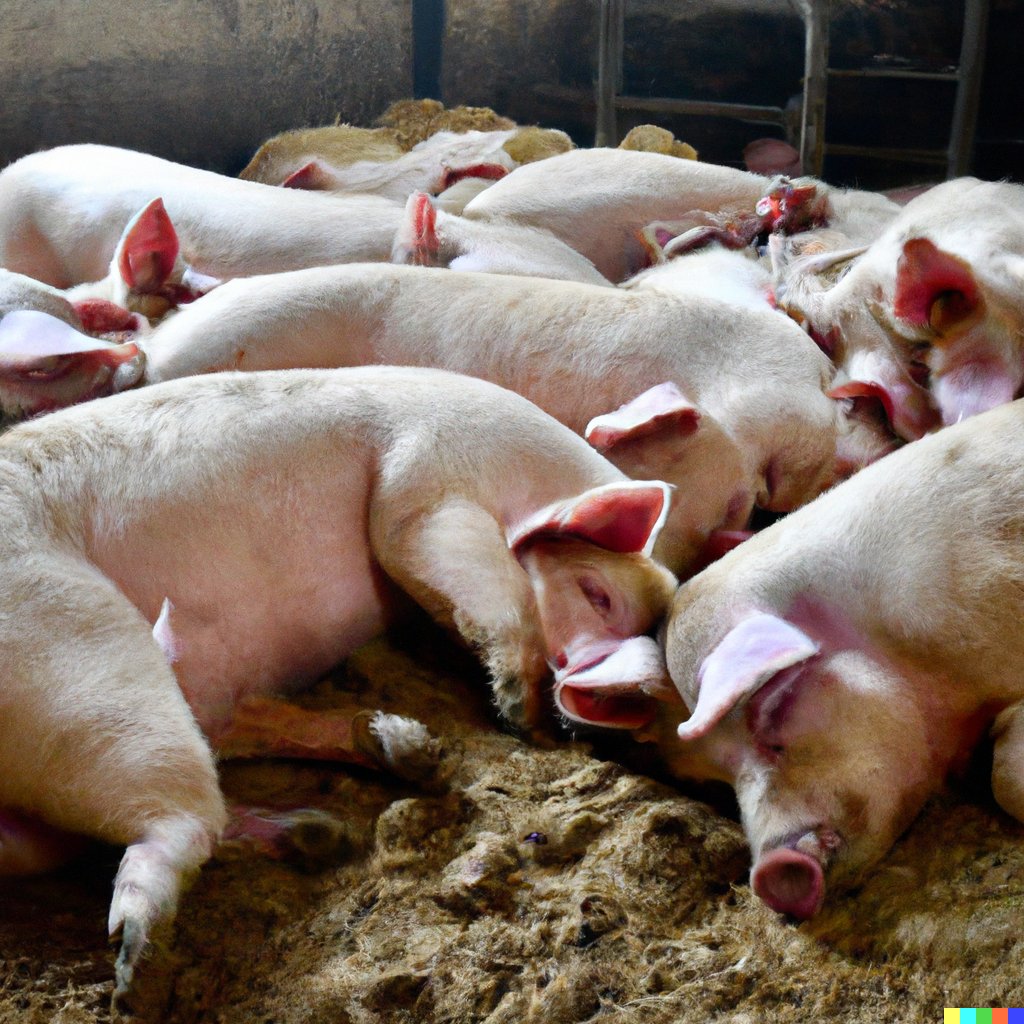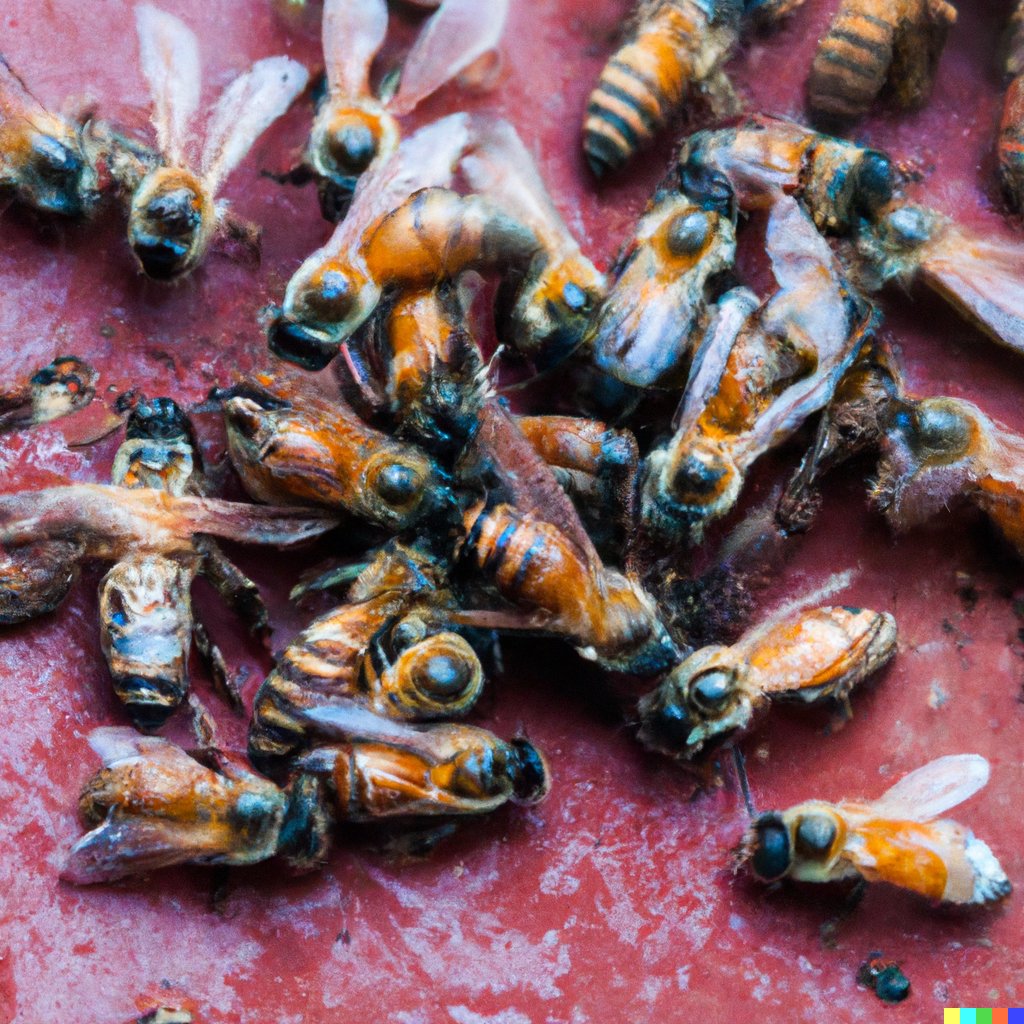
Welcome to a shocking reality that affects you. The toxic contamination of dioxins in our environment has become a pressing concern for many. With their detrimental effects on human health and the environment, understanding and addressing this issue is crucial for the future of our planet and the well-being of future generations. Let's delve into this pressing topic and discover how it affects you and those around you.
Understanding the Nature of Dioxins
Dioxins: slowly seeping into the world like a bad ex. They possess unique chemical properties with high toxicity levels. Comprehending their long-term effects is crucial. Exposure to dioxins can lead to cancer and developmental issues. Monitoring their presence in our environment is a must.
Researchers at the National Institute for Occupational Safety and Health have discovered the potential impact of these compounds. Leaving a toxic footprint for generations to come - the potential of dioxins requires thorough analysis.
Global Spread of Dioxin Contamination
A worldwide dioxin contamination problem is rising. Air and water pollution occur when dioxin is transported and deposited in the environment. It can enter the food chain, making this an urgent issue. People who are unaware of this are disregarding the long-term effects on future generations.
The health risks of dioxins are like a game of Russian roulette, but the bullets are toxic chemicals. We are not gambling with our lives, but with the future of generations to come.
Health Risks Posed by Dioxins
Dioxin Exposure: A Real Threat to Well-being!
Ingesting or inhaling dioxins, a notorious environmental contaminant, can be highly hazardous. It can cause skin disorders, reproductive complications, immune system impacts, and an increased risk of various cancers. Vulnerable populations such as fetuses and infants are especially susceptible to the long-term consequences from prolonged dioxin exposure.
Moreover, the health risks posed by dioxins go beyond the present. They can be passed on to future generations through genetic modifications caused by exposure. This emphasizes the need for proactive measures to reduce dioxin emissions and lessen the negative effects on public health.
Pro Tip: Regular monitoring and regulation of industrial processes can help prevent or control dioxin pollution. This will protect the well-being of current and future populations alike!
Bioaccumulation and Biomagnification in Food Chains
Let's explore a table to understand bioaccumulation and biomagnification of dioxins in different organisms in a food chain. This'll help us see how these toxic compounds get concentrated in higher levels.
| Organism | Dioxin Concentration (ng/g) |
|---|---|
| Phytoplankton | 2 |
| Zooplankton | 5 |
| Small Fish | 20 |
| Large Fish | 50 |
| Top Predators | 100 |
We can see that dioxin concentration keeps getting bigger up the food chain. Phytoplankton pick up small amounts of dioxin from the environment. As zooplankton eats more, the level magnifies. This continues as small fish take in contaminated prey, leading to more in big fish. Finally, top predators get the most accumulation.
It's not good for animals and humans to be exposed to high dioxin. Animals may have decreased reproduction or bad immune system. People who consume dioxin-filled seafood may have health problems.
Tip: Eat less animal products from higher levels of the food chain to reduce dioxin exposure and stay healthy. Pass down something better than just genes - be aware of the dangers of dioxin pollution and don't pass on a legacy of health hazards and bad jokes.
Transgenerational Effects of Dioxins
Transgenerational effects are caused by exposure to dioxin. This affects pregnant mothers and the development of their unborn child, as well as the health of future generations. Possible outcomes include long-term health risks and developmental problems.
Don't worry about future generations, dioxins will be around longer than that awkward family gathering you don't want to attend!
Environmental Persistence of Dioxins
Dioxins are infamous for their long-term persistence in the environment. This high chemical half-life leads to residual contamination and potential ecosystem threats.
The environmental persistence of dioxins requires comprehensive strategies to mitigate adverse effects on future generations. Key factors include:
- Chemical half-life up to several years
- Long-term persistence in soil, sediment, and biota
- Bioaccumulation and biomagnification
- Prolonged presence in food chains
- Complex structure and resistance to breakdown
- Limited feasibility and high costs for remediation
Bioaccumulation and biomagnification contribute to the prolonged presence of dioxins in food chains. This exacerbates the risk of exposure to organisms within the ecosystems. The complexity of dioxin's chemical structure poses difficulties to its degradation. Thus, remediation efforts are difficult to carry out.
The World Health Organization found that even small amounts of exposure to dioxins can have detrimental effects on human health, including developmental abnormalities and increased cancer risk. For this reason, international measures must be taken to prevent and reduce dioxin pollution.
International Measures Against Dioxin Pollution
The world is fighting dioxin pollution. Governments, regulatory bodies and environmental organisations are taking lots of measures to protect us. Global initiatives, strict regulations, international cooperation and strategies for reducing pollution are some examples.
Let's look at a table. It shows some key international efforts.
| Measure | Description |
|---|---|
| Stockholm Convention on Persistent Organic Pollutants | A treaty to stop or limit dioxin production and use |
| Emission standards | Limits on dioxin emissions from industries |
| Industrial compliance | Ensuring industries follow regulations and dispose properly |
| Hazardous waste management | Implementing practices to avoid contamination |
| Research and development | Studies to understand effects and find solutions |
It's also important to raise public awareness and encourage responsible consumption. People can make a difference.
One example is a small town affected by industrial contamination. People got ill due to the high dioxin levels. They got people and authorities to notice. As a result, there were new regulations and stricter emission controls. The power of collective action can save future generations.
We can't save the world but we can recycle. That's a start!
Individual Responsibility and Action
Individual Accountability and Engagement:
- Personal consumption choices: Individuals can exhibit responsibility by choosing eco-friendly products. This reduces environmental impact.
- Advocacy for eco-friendly products: Promote the use of eco-friendly products. This raises awareness and encourages others.
- Support sustainable practices: Support businesses and organizations that prioritize sustainable practices. Eg. Purchasing from green companies or donating to environmental causes.
- Adopting a conscious lifestyle: Adopt a conscious lifestyle. Eg. Reducing waste, conserving energy, and protecting personal health.
To tackle dioxin pollution:
- Governments should set stricter emissions standards for major contributors.
- International collaboration for strategies and policies.
- Education and awareness campaigns to inform the public.
- Research into alternative technologies and cleaner production methods.
By taking individual responsibility and implementing stricter regulations, we can reduce the impact of dioxin pollution and promote a sustainable future.
Dioxin Formation and Unintentional Production
Dioxins form via chemical processes and are often produced as unintentional industrial by-products or due to organic combustion. Chlorine contributes to their formation, making them a major source of pollution in industrial emissions. To understand dioxin formation and production, consider the below factors:
| Factors Contributing to Dioxin Formation | Unintentional Production |
|---|---|
| Chemical formation processes | Industrial by-products |
| Organic combustion | Chlorine presence |
Though some sources of dioxin pollution have been tackled, there are still great challenges in reducing their unintentional production. Research on industrial emissions and other pollution sources is key to taking action and preventing future generations from suffering the negative effects of dioxins.
Therefore, it is crucial to prioritize reducing dioxin pollution for future generations. Taking proactive steps towards understanding its formation and addressing sources of unintentional production can help mitigate its potential harm. Let's work together to protect our environment and secure the health of future generations before it's too late! Addressing Environmental and Health Implications: Whilst future generations face the toxic consequences of dioxin pollution, we can only hope our dark humor doesn't emit its own deadly fumes!
Addressing Environmental and Health Implications
Dioxin pollution is a major issue needing urgent attention. It's essential to launch pollution reduction strategies and health protection measures to guard current and future generations. Raising awareness of the dangers of dioxins and promoting preventive measures is key for ensuring environmental safety and reducing impacts on human health.
To understand the importance of addressing environmental and health implications, let's look at this table:
| Intervention Measures | Importance |
|---|---|
| Pollution Mitigation Strategies | Vastly reduce dioxin emissions and stop contamination |
| Health Protection Measures | Necessary for protecting individuals exposed to dioxins and minimizing risks |
| Public Awareness Campaigns | Important for teaching communities about the dangers of dioxins |
| Preventive Strategies | Critical for limiting exposure to dioxins and maintaining a healthier environment |
| Health Advisory Services | Provide guidance on safe practices, aiding individuals in protecting their well-being |
It's clear that addressing environmental and health implications is critical. Combining pollution reduction efforts with targeted health protection can tackle the harmful effects of dioxin pollution.
Progress has been made in implementing preventive strategies, yet unique details still require attention. Technologies for monitoring dioxin levels and regulatory frameworks to ensure industry compliance are vital. Ongoing research into long-term impacts of dioxin exposure will give valuable insights into prevention strategies.
An example of the need to address environmental and health implications is a region with unchecked industrial activities. Elevated dioxin levels were found in the soil and water. The local community suffered from reproductive issues and increased cancer rates. Clean up and education was provided to the community. These stories show the importance of proactive measures.
The government's approach to dioxin regulation is too little, too late - time to bring out the hazmat suits!
The Role of Government and Policy in Dioxin Regulation
The government has a big responsibility when it comes to controlling dioxins; it must create environmental policy and legislation. This will help ensure pollution control and public health protection by setting health standards and guidelines for industries that produce or release dioxins.
To regulate dioxins properly, the government must implement strict policies. This means setting emission limits and mandating proper waste management practices to reduce dioxin contamination.
Government agencies should also monitor and assess compliance with these regulations via inspections and audits. This way, they can ensure industries are following the necessary controls.
Preventing future contamination is also important. Governments should invest in research and development to identify alternative production processes that minimize dioxin emissions. Plus, they should encourage collaboration between industry experts and environmental scientists to come up with creative solutions.
The government should also work with international bodies and participate in global initiatives surrounding dioxin control. Sharing best practices and harmonizing regulations across nations will help create comprehensive strategies to combat dioxin pollution worldwide.
Strategies for Reducing Dioxin Exposure
Strategies to Mitigate Dioxin Exposure We can reduce dioxin exposure by adopting safety measures, implementing risk management strategies, following health guidelines, practicing contamination avoidance, and taking protective actions.
Check out this table of strategies for reducing dioxin exposure:
| Strategy | Description |
|---|---|
| Safety Measures | Implementing stringent safety protocols to minimize the risk of dioxin exposure |
| Risk Management | Developing strategies to identify and manage potential sources of dioxin |
| Health Guidelines | Following established guidelines to limit dioxin exposure levels |
| Contamination Avoidance | Avoiding contaminated areas or substances that may contain high levels of dioxin |
| Protective Actions | Taking proactive steps to protect oneself from possible exposure to dioxins |
Raise awareness about the risks of dioxin pollution. Encourage individuals and communities to take action. Safeguard current and future generations from the adverse effects of dioxins.
Start taking protective action today! Don't let this frightening world of dioxin pollution cost future generations with expensive therapy bills.
Educating the Public on Dioxin Risks
Raising public awareness of dioxin hazards requires strategies like health education, community outreach, and informative resources. The campaigns involve public awareness, health education, environmental risks communication, informative resources, community outreach, knowledge dissemination, and public health information.
To amplify the dissemination of crucial information on dioxin contamination, interactive workshops and collaborations with local organizations are additional considerations for effective engagement.
In one small residential area, a committed group organized public forums and mobilized experts to share insights on health hazards. This led to increased awareness and drove remedial actions in their community.
It's time to take action against dioxins – they are the ultimate party crashers, ruining ecosystems and wildlife!
Ecosystem and Wildlife Impacts of Dioxins
Pro Tip: Put in place good pollution control and use sustainable methods. This can help reduce the bad effects of dioxins on ecosystems and protect wild animals.
Future Perspectives on Dioxin Pollution: Looking to the future, our environment is in a worse situation than what we are passing down to our children.
Future Perspectives on Dioxin Pollution
The Future Impact of Dioxin Contamination
Dioxin pollution has lasting consequences that go beyond the present. To understand its future implications, it is important to assess the potential risks it poses to humans and the environment.
To get a better view of the long-term effects of dioxin pollution, a table should be made. It should have columns such as "Environmental Legacy," "Prospective Health Concerns," "Future Risk Assessment," and "Sustainability Considerations." Analysing these factors can give us a full picture of dioxin contamination's effect on the planet's future.
Apart from the factors listed, it is essential to consider other details about dioxin pollution. This includes researching new technologies which can reduce dioxin levels or methods to deal with industries producing dioxin emissions.
To fight and lower dioxin pollution, there are several proposals:
- Regulatory bodies should force industries releasing high levels of dioxin into the atmosphere to have stricter emission standards.
- Investing in research and development for eco-friendly manufacturing processes can reduce dioxin levels.
- Lastly, integrating sustainability considerations into policy-making can help ensure a healthier environment for the future.
Each of these solutions works towards cutting down dioxin pollution. Stricter emission standards hold industries accountable, reducing their contribution. Investing in eco-friendly manufacturing processes reduces current emissions and prevents future contamination. Including sustainability considerations in policy-making makes sure decision-making is aligned with environmental goals, promoting responsible practices and reducing long-term risks of dioxins on our planet's future.
What are dioxins and how do they pollute the world?
Dioxins are a group of highly toxic chemicals that are released into the environment through industrial processes, waste incineration, and forest fires. They can enter the food chain, contaminating plants and animals, and ultimately affecting human health.
How does dioxin pollution affect future generations?
Dioxins have a long half-life, which means they can persist in the environment for years. This can lead to accumulation in the bodies of animals and humans, causing adverse health effects that can be passed down to future generations through genetic mutations.
What are the health effects of dioxin exposure?
Exposure to dioxins can lead to a range of health problems, including cancer, reproductive and developmental disorders, immune system damage, and hormonal disruptions. These effects can be even more severe for unborn babies and young children.
How widespread is dioxin pollution in the world?
Dioxin pollution is a global issue, with industrialized and developing countries alike contributing to its presence in the environment. Dioxins can travel long distances through air and water, making it a problem that affects countries all over the world.
What measures are being taken to reduce dioxin pollution?
Many countries have implemented regulations to limit the production and release of dioxins into the environment. Efforts are also being made to clean up contaminated sites and promote sustainable waste management practices to prevent dioxin pollution.
How can individuals help reduce dioxin pollution and protect future generations?
Individual actions can make a big difference in reducing dioxin pollution. Simple steps like properly disposing of hazardous waste, supporting sustainable and eco-friendly practices, and advocating for stricter regulations can all help in protecting future generations from the harmful effects of dioxins.
Conclusion:
Dioxins pollution presents a significant environmental and health challenge, impacting both current and future generations. Understanding the nature, spread, and impact of these toxic compounds is crucial for developing effective strategies to mitigate their effects. Through global cooperation, individual responsibility, and informed public awareness, efforts to reduce dioxin exposure and protect both human health and the environment can be strengthened. Continuing to address the challenges posed by dioxins will contribute to a healthier, more sustainable future for all.














